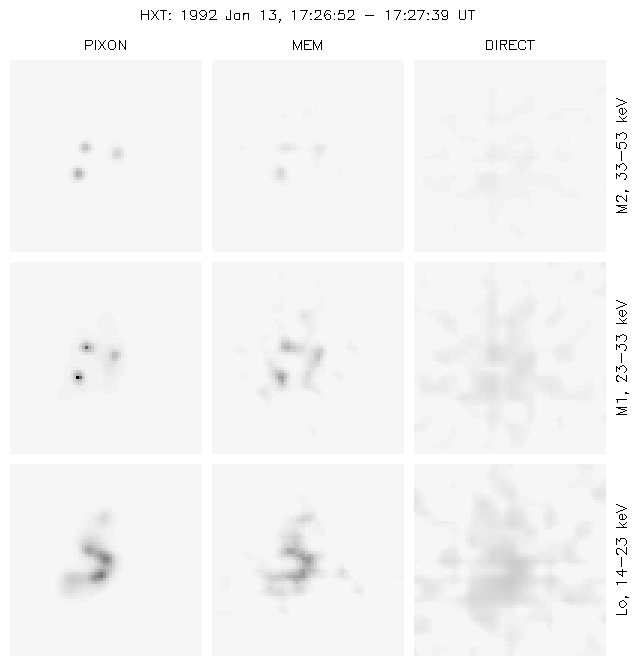I examine several simulated HXT Fourier
synthesis data sets using both the pixon and the MEM image reconstruction
algorithms. The pixon algorithm is better photometrically. This is the
result of better supression of spurious sources in the pixon reconstructions.
However, the pixon algorithm is an order of magnitude slower than the MEM
algorithm. Thus, the pixon algorithm is more appropriate in situations when
photometry is important, but the MEM algorithm is more appropriate when
photometry is not important (e.g. morphological studies or quick-look
imaging). The loop top source in the Masuda event is not impulsive outside the
peak of the flare. The HXT data used here are not sufficient to determine the
nature of the loop top source during the flare peak.
PIXON IMAGE RECONSTRUCTION FOR FOURIER SYNTHESIS DATA
Thomas R. Metcalf, Hugh H. Hudson, Takeo Kosugi, Richard Puetter
We applied pixon-based multiresolution image reconstruction to real
and simulated data from Yohkoh's Hard X-ray Telescope (HXT)
(Metcalf et
al., 1996). The goal of the pixon algorithm is to minimize the
number of degrees of freedom used to describe an image within the
accuracy allowed by the noise. This leads to a reconstruction which
is optimally constrained. In the image below, the pixon code is
applied to a solar flares observed by HXT on 1992 January 13. The
pixon reconstruction is compared to the results of a direct, linear,
smoothed inversion of the HXT Fourier synthesis data and to a maximum
entropy reconstruction. The maximum entropy reconstruction is vastly
better than the direct inversion, but the pixon reconstruction gives
superior noise suppression and photometry. Further, the pixon
reconstruction does not suffer from over-resolution of the images.

Other Pixon Sites
Rick Puetter's Pixon Gallery


